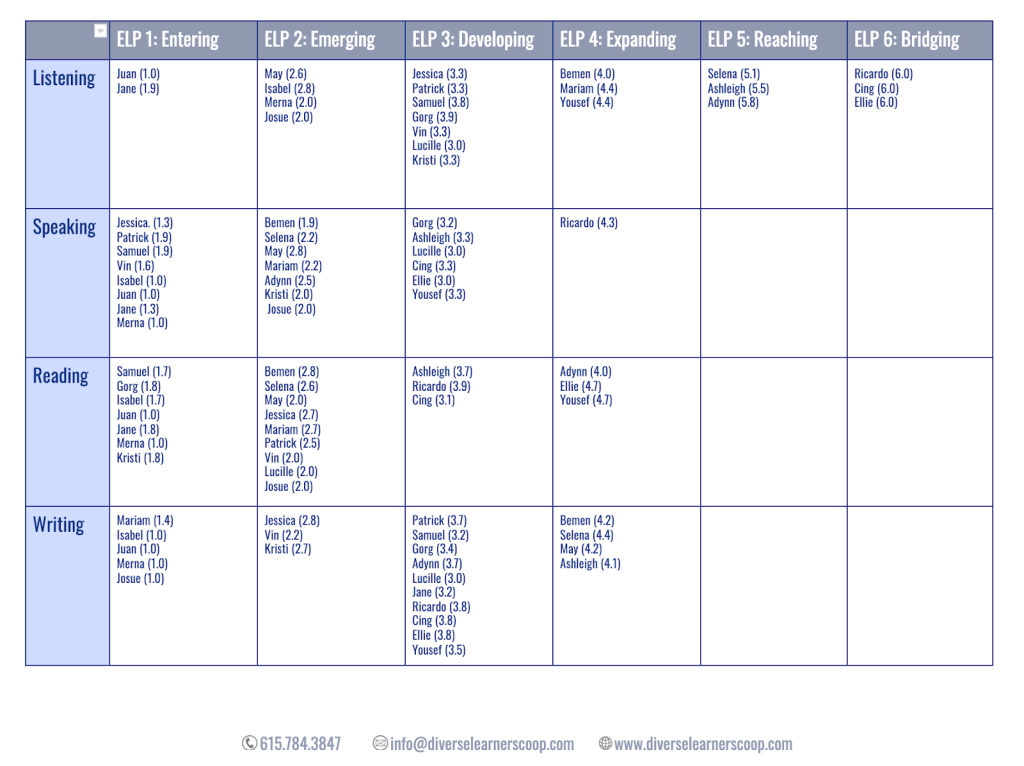By Mary Rakes, Director of EL Strategy
One of the biggest questions I get as I work with EL teachers is: How do I know I am giving my students the right supports? I love this question for so many reasons. It is honest, humble and heartfelt. Teachers of ELs often are afraid they are going to miss giving students what they need and deserve. I will be writing a series of blog posts aimed at answering this question.
This question can be answered so many ways, but I find it is best to start at the beginning. Knowing what supports to give your students begins with knowing your students. You can’t know what they need until you know their learning profiles. One of the best ways to figure this out is to map out your student ACCESS levels/scores on a WIDA Can Do Chart. Going across the top of the chart are the levels 1-6. Each level has a space for Listening, Reading, Writing, and Speaking. All a teacher has to do to use this chart is to write the names of their students under the corresponding score for each domain. From here, trends become clear.
For example, on this example chart of a 9th grade class, the teacher can see trends in his or her classroom, which will influence the way this teacher instructs his or her class.

A few of these trends that stand out:
- At first glance, one can see that there are few students scoring over a level 4 on anything. This will influence the overall lesson plan. Maybe the lesson plan needs to be written with levels 1-3 in mind, and followed by accommodations that encourage higher ELP (English Language Proficiency) students to reach and continue to grow!
- Almost half of this class is below a level 3 in reading. That can drastically change the way this teacher plans lessons!
- There are six students who scored a 2 or below in listening. The teacher knows which students will need repeated readings and slower verbal instructions.
- The majority of the class sits around a level 3 in all domains. This teacher can use the WIDA Can Do Descriptors, look at the expectations for a level 3 and go from there when planning.
This is so much information gained from just one small chart! It takes less than ten minutes to create, but gives teachers a surprising amount of valuable information. From here, teachers can decide what exactly their students need to succeed.
Create your own chart like this one, and take that first step towards getting to know your English Learners better! How do you ensure you know what your ELs need?
Want to make sure you never miss a future blog post? Subscribe to our newsletter and receive a monthly round up of our blog posts straight to your inbox!
